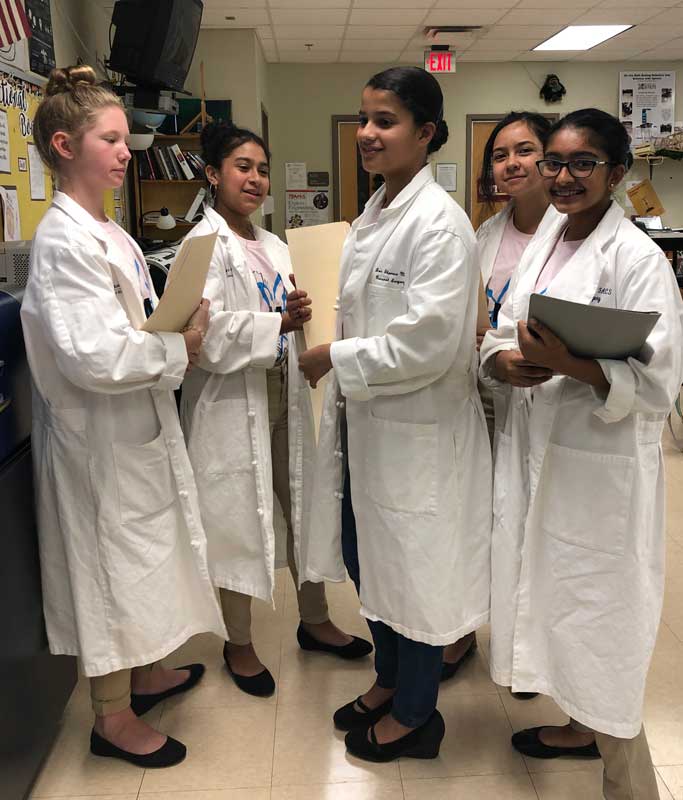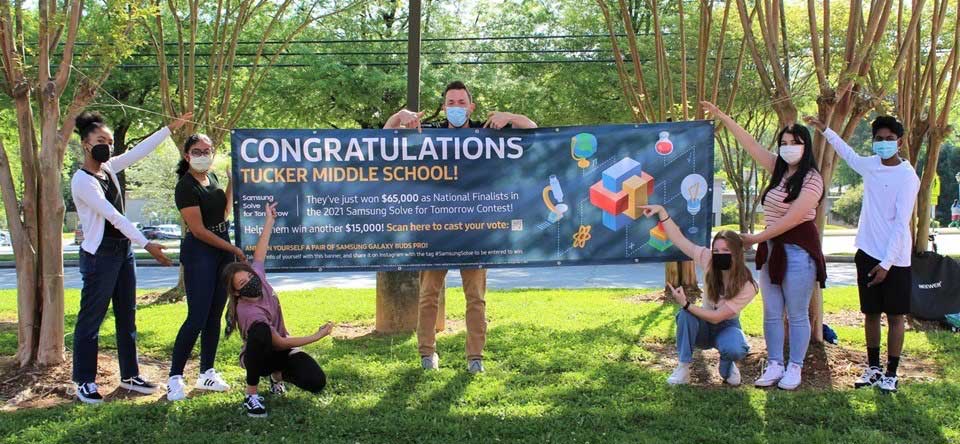 STEM education has been on the rise in recent years. Science, technology, engineering and mathematics programming promotes critical problem-solving skills and challenges students. In addition, many STEM programs are facilitated, which means that students must work together to learn with their teacher as a guide instead of a direct instructor. The STEM cohort operates in groups to complete hands-on projects that keep students engaged and utilize strategic thinking.
STEM education has been on the rise in recent years. Science, technology, engineering and mathematics programming promotes critical problem-solving skills and challenges students. In addition, many STEM programs are facilitated, which means that students must work together to learn with their teacher as a guide instead of a direct instructor. The STEM cohort operates in groups to complete hands-on projects that keep students engaged and utilize strategic thinking.
Tucker Middle School became Georgia’s first STEM-certified middle school in 2014. In the time since the program’s inception, Tucker Middle’s STEM students and teachers have won awards from the Technology Association of Georgia and made it to the finals of a national competition for one of their projects, a device to prevent human trafficking in airports. It is no surprise that many students are interested in learning from such a great program. Students can join the STEM program by completing the application process and being accepted into it.
So how does the application process work?
First, STEM Coordinator Nathan Williams opens up the application for the coming school year on the TMS STEM program’s website; this year, it opened on January 30. Parents, guardians or students then fill out a six- to seven-page Google form. The application will close mid-March, and then applicants will learn whether they have moved on to round two. Round two is an “interview” portion that both parents or guardians as well as the applicant students will attend.
There are a few things one can keep on-hand when filling out the application. You will need your student identification number, the email addresses of two teachers you trust to serve as recommendations, and the knowledge of any academic accommodations you may need. If you are a parent, keep your student with you while filling it out; there are a few questions they will need to be present to answer.
“It’s not super long, but it does have a few essay questions,” says Mr. Williams. “Like, ‘is being proficient in math useful as a scientist?’ ‘What question would you like to devote your time to answering?’ Be prepared to spend a little bit of time filling out the application because it’s all part of that initial stage.”
Contrary to what one may expect, there is no need to send test scores. “I get the applications in, and then I request math scores from the counselors at the elementary schools or, if it’s at the middle school, then I can get them directly,” Mr. Williams says.
From there, students’ applications are graded on a rubric: 50% math scores, 25% teacher recommendations, and 25% application answers. Qualifying students are notified that they will move on to round two.
 Round two is described alternately as an interview or audition, but Mr. Williams reassures interested parties that it is nowhere near as stressful as it may sound.
Round two is described alternately as an interview or audition, but Mr. Williams reassures interested parties that it is nowhere near as stressful as it may sound.
“The kids get split into little mini groups…and then there’s a build challenge and a logic problem with math. Those are two separate things,” he says. “During that time, the teachers are going to be evaluating them on premade rubrics. Basically, how well are they working together, how insightful are comments, you know, that kind of thing.
“What we’re really looking for is, hey, is this kid not working at all? Is he not engaging and being too bossy?” he adds.
While the students are attempting these challenges, Mr. Williams answers parents’ and guardians’ questions about the program. One of the biggest questions that comes up is about accelerated math; whether students have previously been in the accelerated math classes or not, if they are accepted into the STEM program, they will also be moved into accelerated math.
Other questions tend to arise earlier in the application process, Mr. Williams acknowledges; sometimes parents fill out the STEM application under the assumption that acceptance to the STEM program can be used to get their student into Tucker Middle School even if they aren’t in the right zone. However, “That’s just not how the program works. It’s not like a school choice thing,” Mr. Williams clarifies. “They still have to live at an address that allows them to go to Tucker Middle School.”
Mr. Williams urges Tucker Middle School students who do not qualify for the STEM program not to be discouraged. “We have tons of cool stuff that models the way all the STEM cohort teachers teach that is available at the school. We have engineering technology classes…an afterschool club called Technology Student Association that is one of the most successful in the entire nation. Our robotics team is very competitive. We have this entire innovation lab that I’m sitting in now that allows kids to innovate and create.
“Whether you’re in STEM or not, there’s a lot to learn and a lot to take advantage of at our school.”
You can access the Tucker Middle STEM website and application at tuckermiddlestem.weebly.com.

